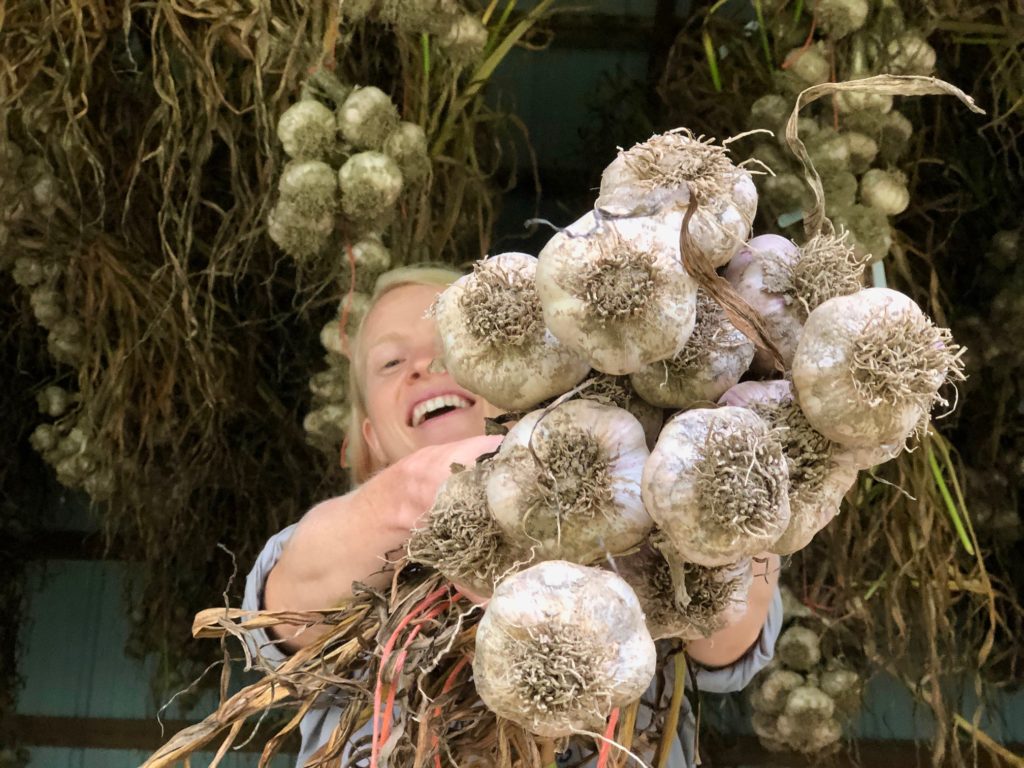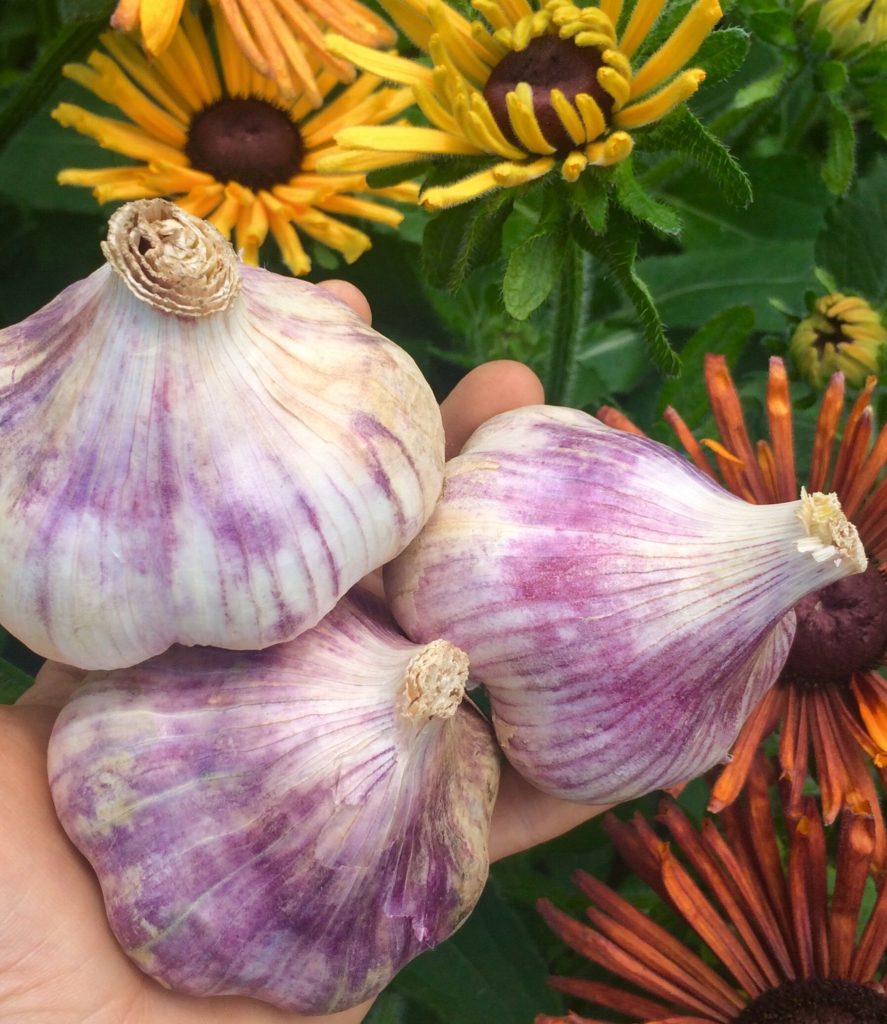Secrets of Storing Garlic

Cured well and kept in the right conditions, garlic will store well, even in your home.
Courtesy of Petra Page-Mann / Fruition Seeds
The storage life of your garlic is a complex equation.
I love eating garlic all season long. I’ve let untold bulbs of garlic sprout, shrivel and mold over the years. My hope for this article is to save you time, money and heartache, so here is how to store garlic well, for seasons to come. The short story:
Optimum Conditions for Storing Garlic
- 56 to 58 F
- 45 to 50% relative humidity
- Plastic mesh bags are ideal
Bottom line: Fairly cool, relatively dry & well-ventilated areas store garlic best
Like anything, there is so much more to consider. Here’s the full story:
Growing Great Garlic to Store in All Seasons
The storage life of your garlic is a complex equation, with three main variables:
- Cultivar
- Growing Conditions
- Storage Conditions
Let’s dig a little deeper.
Cultivar
Beyond softneck and hardneck, there are many different DNA types of garlic with thousands of varieties. The Rocambole DNA types, for example, store for about 3 to 4 months. Silverskins, on the other hand, will often store over 12 months.
Our website www.fruitionseeds.com is a great reference for these details. We grow many different types of garlic to enjoy their diverse flavors as well as ensure our garlic supply in each season.
Growing Conditions
Healthy garlic stores much longer than diseased or stressed garlic.
Balanced, abundant fertility is key for large, healthy bulbs. Too much nitrogen will increase bulb size but decrease bulb storability. And did you know your garlic begins to go into dormancy before you harvest it? When average temperatures the month prior to harvest are above 80 F, your garlic doesn’t go into dormancy as quickly, decreasing your garlic’s storability.
Also, too much or too little water can affect bulb size as well as storage, though garlic has a fairly wide window of tolerance for water. Don’t fret.
Finally, harvesting your garlic at the proper time and curing it well makes a world of difference when it comes to long-term storage.

Bulbs with exposed cloves and few wrappers should be eaten first, since they will store poorly.
Courtesy of Petra Page-Mann / Fruition Seeds
Storage Conditions
Commercial garlic storage aims to keep bulbs between 56 and 58F. Less than 50 F, your garlic is likely to sprout. Don’t be tempted to store garlic in your fridge! Above 66 F, your garlic will quickly shrivel.
The ideal relative humidity for your garlic is 45 to 50%. Good circulation prevents air from stagnating and mold from developing on your garlic. If you have lower humidity, air circulation will cause less heartache. An unheated pantry or garage is often ideal. Basements often have the optimal temperature, but their humidity can be too high.
Balancing these variables can be quite a puzzle.
What to Store Your Garlic In
Short term, storing your garlic in paper bags will do the trick. If you’ll eat all your garlic before the New Year, this is a perfect plan.
For the long winter ahead, plastic mesh bags will serve you best. Especially if you have an abundance of garlic and are committed to enjoying it well into spring (if not summer), the additional airflow from the mesh will be your greatest ally.
Secrets to Long-Storing Garlic
Small and medium-sized bulbs store longer, on average, than large bulbs, provided their size doesn’t reflect disease or other adversity. Be sure to re-plant your largest bulbs this fall, but enjoy your second largest bulbs first this winter.
Clean bulbs with abundant, tight wrappers store better than bulbs with remnant soil, harboring potential moisture and pathogens with few wrappers.
Garlic with its stem cut less than one-half inch from the bulb will likely store less long, since more air is likely to penetrate its wrappers.
Keep a close eye on your garlic. Look and touch your bulbs throughout the winter, enjoying the bulbs that soften first. Notice if there is a pattern: the garlic toward the front tends to shrivel first.
Garlic is one of the most rewarding plants to grow and to eat. Stored well, you’ll enjoy your garlic this season and for many more to come!

